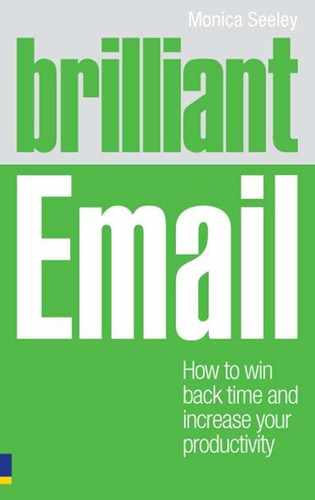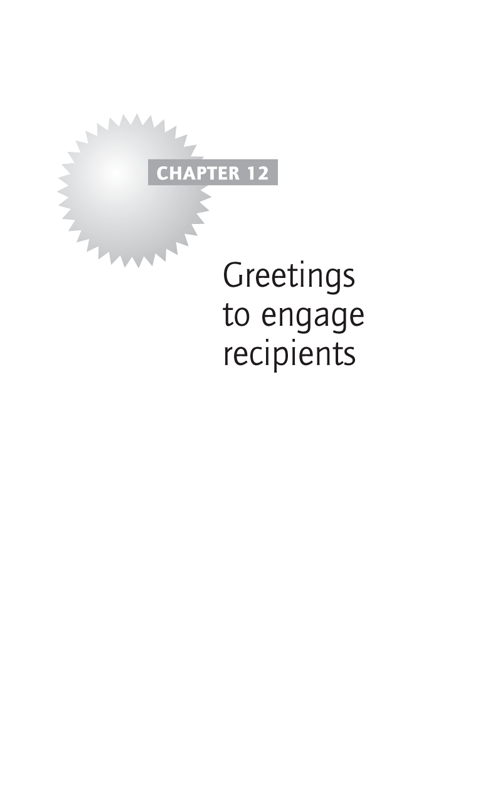Helen Keller
Why people start an email with no greeting is one of the unsolved mysteries of the internet age. The greeting is the opening handshake of email dialogue. You would never pick up the phone without saying something like ‘Hello, this is XXX how are you?’ What you say or do not say immediately sets the tone and lays the foundation for the working relationship and probability of doing further business together.
Invite people to read your email
This chapter covers the third and often overlooked component of your brilliant email dress code, the opening greeting. The way you ‘invite’ people to read your email conveys key information about you and the way you work or interact with people.
![]()
Example 1
To: Carol Black
From: John Brown
Subject: Budget for meeting with PR agency on Monday at 3.00pm
Where’s the briefing for next week’s meeting?
JB
Example 2
To: Carol Black
From: John Brown
Subject: Budget for meeting with PR agency on Monday at 3.00pm
Hi Carol,
When will the budget briefing be ready for next week’s meeting with the new PR agency?
Regards,
John
Which one of the examples above will generate a more timely and willing response? Probably the second email. It conveys some personalisation, sincerity, warmth and respect. Whereas the first feels like it is almost shouting a command at Carol. It suggests that John is far too busy and possibly too senior to take the time to bother about how to get the best from Carol.
Take time to be polite
I don’t want to be sexist here, but some research I undertook a couple of years ago to identify if men and women had different email styles showed that men are more liable to do away with the greetings in email than women. They tend to launch straight into the purpose of their email and generally write shorter, more monosyllabic emails. While I applaud trying to keep their time on email to a minimum, it does not take much longer to add a short greeting in keeping with their relationship with the recipient.
Greet the recipient as you would want to be greeted. Here are some ways to greet people by email.
![]()
Do
- Always use one of the following to greet the recipient: ‘Dear’, ‘Hello’, ‘Hi’, ‘Good morning/evening’, ‘Karen/David’.
- Spell the person’s name correctly. Add their name to your dictionary if you are going to email the person often, especially if the name has accents/unusual spelling.
- Use a greeting that reflects the existing level of the relationship. For example, when emailing a new prospect, it will usually be a formal ‘Dear John’, ‘Dear Mr Smith’. As you get to know each other, greetings may become less formal – ‘Hi John’, but only if the dialogue suggests this will be well received – i.e. you have spoken or the recipient has emailed you and used a less formal salutation.
- When responding to email containing a greeting, mirror the initial salutation.
- Add a greeting even when replying to an email which has no greeting.
Don’t
- Use nicknames and abbreviations unless the other person has used them.
Greetings in email are the handshakes of electronic communication.
- Always start your email with a salutation which reflects current standing and formality of the relationship.
- Vary the greeting as you get to know the recipient better and the relationship builds.
- When responding to an email for the first time, mirror the way the sender addressed you. If they did not include a greeting, start your reply with their name.

